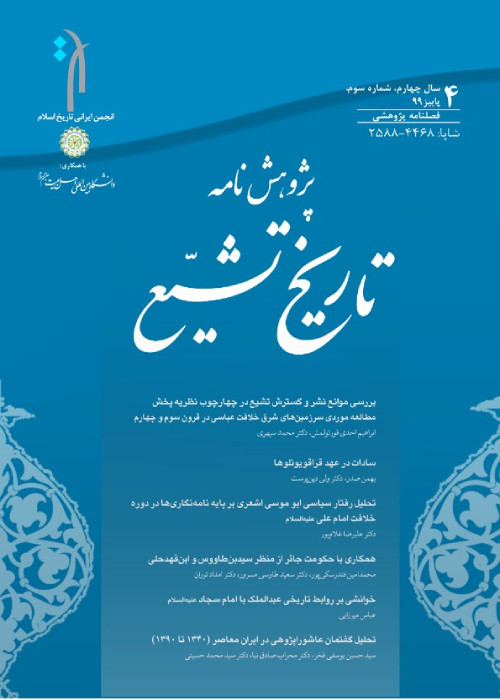The Semiotic of Imam Ali (as) guardianship in Tahmasebi Falnama
Tahmasebi Falnama is one of the illustrations of the Safavid era that contains topics such as concepts of Shi'a and the interpretation of good and evil, which is due to the submission of the Ahl al-Bayt. This manuscript was illustrated during the reign of Shah Tahmaseb. Shah Tahmaseb with the help of Shi'a scholars and the guidance of the greats such as Mohaqqeq Al-Karaki and Mohammad baqer Majlesi considered that one of the best ways to convey religious concepts was to recite texts and editions to Ahl al-Bayt's images. Therefore, he provided grounds for Shi'a development by supporting artists. Shah Tahmaseb intended to reinforce Shi'a thoughts and insights all over Iran through Shi'a concepts and imams’ visualization especially Imam Ali (as). This article answers these questions; What are Shi'a concepts in Tahmasebi Falnama figures? What are the signs and symbols of Imam Ali(as) guardianship in the manuscript? To answer these questions the following objective was considered: Identification and analysis of Falnama figures based on Shi'a concepts and signs of Imam Ali (as) guardianship. This paper used the library method and collecting subjects and analysis of Shi'a figures and symbols in the descriptive method.
-
Representation of Cultural Identity of Women and Girls in the Cover Designs of Children's Stories in Arab Countries
Ghufran Brimo, *
Journal of WOman in Culture Arts, -
Visual anthropology in globalization path(Case study: contemporary Iranian posters)
Farimah Fatemi, Efatolsadat Afzaltusi *
Journal of Cultural Studies Communication,



